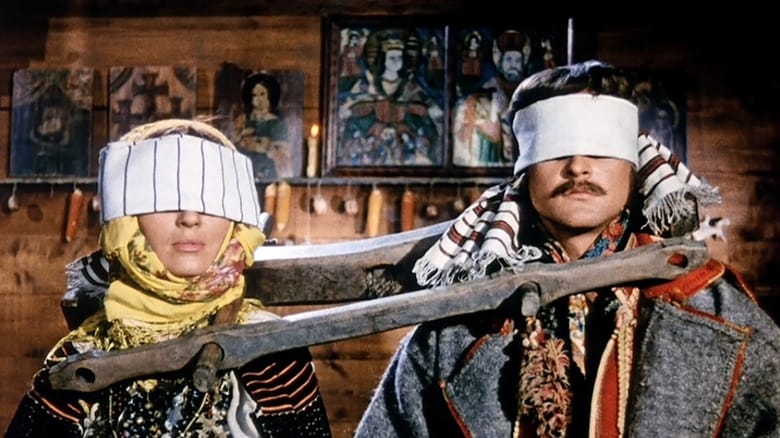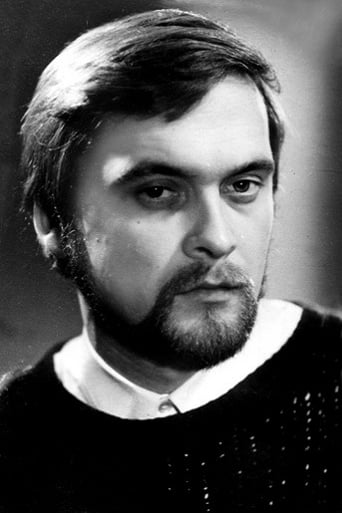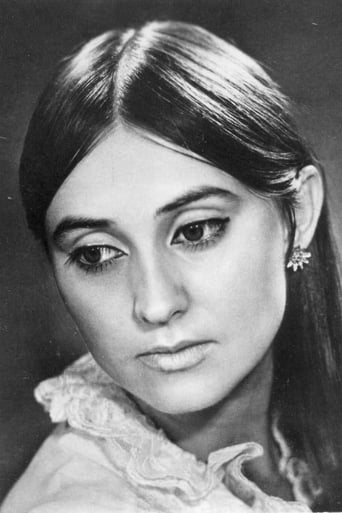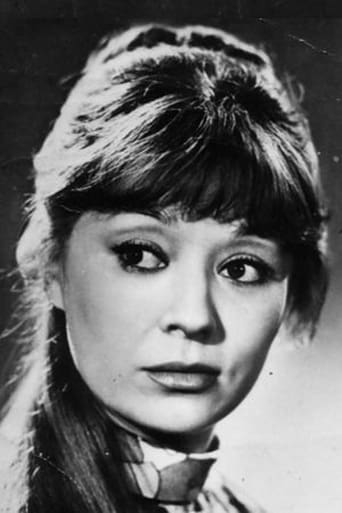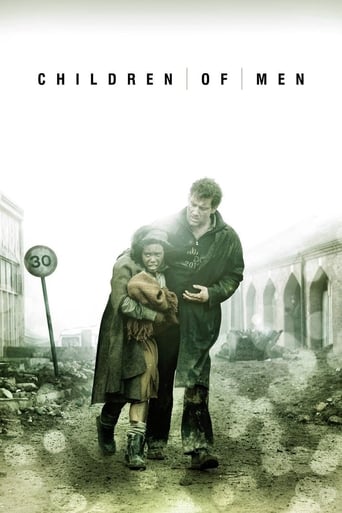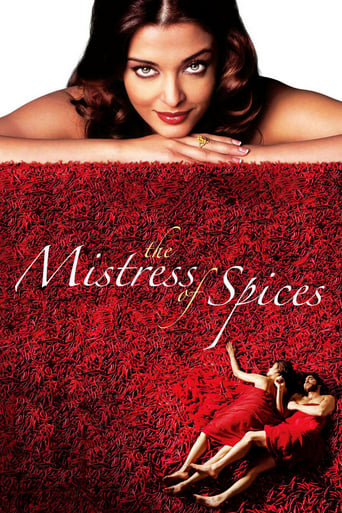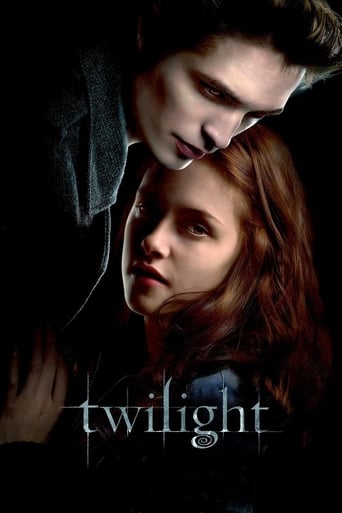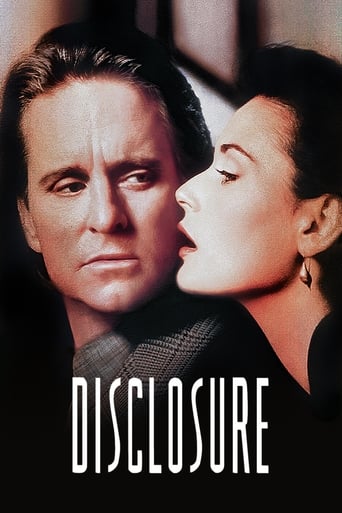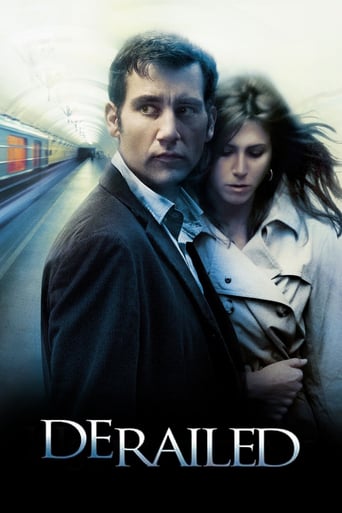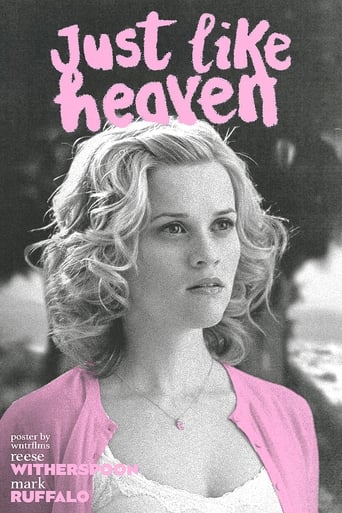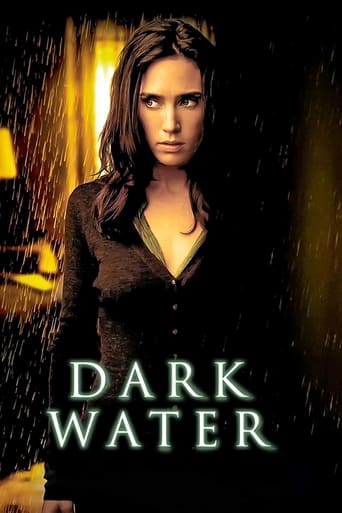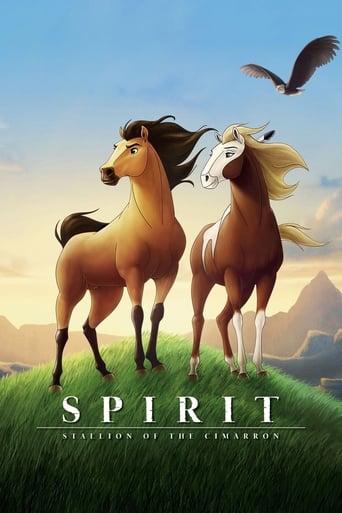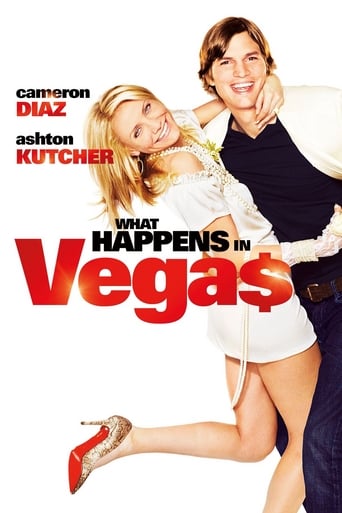Shadows of Forgotten Ancestors (1965)
In a Carpathian village, Ivan falls in love with Marichka, the daughter of his father's killer. When tragedy befalls her, his grief lasts months; finally he rejoins the colorful life around him, marrying Palagna. She wants children but his mind stays on his lost love. To recapture his attention, Palagna tries sorcery, and in the process comes under the spell of the sorcerer, publicly humiliating Ivan, who then fights the sorcerer. The lively rhythms of village life, the work and the holidays, the pageant and revelry of weddings and funerals, the change of seasons, and nature's beauty give proportion to Ivan's tragedy.
Watch Trailer
Free Trial Channels
Cast


Similar titles
Reviews
just watch it!
Clever and entertaining enough to recommend even to members of the 1%
I think this is a new genre that they're all sort of working their way through it and haven't got all the kinks worked out yet but it's a genre that works for me.
This movie tries so hard to be funny, yet it falls flat every time. Just another example of recycled ideas repackaged with women in an attempt to appeal to a certain audience.
If you agree that the medium of movie films has a lot to do with colours, lights and sounds, you should see this 1964 Georgian movie. The storyline is simple - it's a tragic folklore of a village hero from 19th century Georgia. It has the elements of love and revenge, but that's not what you see this movie for. I haven't seen one like this before - a movie whose each frame bursts with color (at times deliberate lack of it) bringing a stream of beautiful art passing before your eyes! The sound complements it too with folk music and sounds of life. The whole experience is magnetic and artful. And that it came from Georgian cinema in the 1960's would surprise you. But even without that prejudice, this is a movie that will delight you like no other. It deserves the label 'Poetry in motion'
In a Carpathian village, Ivan falls in love with Marichka, the daughter of his father's killer. When tragedy befalls her, his grief lasts months; finally he rejoins the colorful life around him, marrying Palagna. She wants children but his mind stays on his lost love.The film is highly symbolic, making frequent use of religious and folkloric images that include crosses, lambs, graves, and spirits. The film also uses color to represent mood. During Ivan's period of mourning, black and white film stock is used. In other scenes, colors are often muted, but provide a contrast to vivid use of red and yellow. On its release, the film's presentation contrasted with the common socialist realism style that had government approval. After refusing to change the film, Parajanov was soon blacklisted from Soviet cinema.I don't think i understand all the symbolism, but I loved the use of color. It is muted, yes, but also just looks sad and impoverished. Part of this may be intentional, part of it not so much. I suspect that the Russian film industry (much like the Italian film industry), was always behind the times in their use of film techniques and technology. Perhaps I misunderstand, but in the West (i.e. America), anything between Eisenstein and Tarkovsky seemingly does not exist. This film ought to be the exception.
Thank god for this man. He could have given us this one film and still changed the medium twice as most filmmakers have done in a lifetime. It deserves to be studied by anyone working today in movies and looking for rich multilayered intuition. This man has centuries in him.The story is deceptively simple; young man loves, loses, and has to scramble on with life. But the way it burrows into you and speaks now, even though it's from another time, well, the way it's done is from another world.To Western viewers, it will seem quite literally like something from another world. It profoundly speaks to me because I was lucky that me and him share a part of that other world, the one closer to the steppe. The difference between worlds is simple; in the West, you had the luxury of painting and theater, and music melded into that with opera, so when cinema rolled around a few centuries later, there was already an established reservoir of ways to see and imagine. The first films were little more than filmed plays with the camera assuming the role of the audience, later renovated in France (partly) through the influence of impressionist painting. Parajanov was Armenian, which is to say from that world that ages ago was swept by invaders from the steppe. There was no lofty art allowed in the centuries of Ottoman blight, nowhere in the empire. There was no Rennaisance. Not there and not where I write this from. Our painting was religious icons. Our theater was song and dance. The collective soul had to pour that way, which is why they still persist and resonate in these parts; in the work of Kazantzakis, Bregovic, Kusturica and others, also why Western-influenced makers like Angelopoulos or Ceylan speak far less to the common folk.You have to appreciate the significance of this in terms of cinema. There was already an established Soviet tradition in film in those days, Parajanov was a student at the prestigious VGIK after all. But, he chose to go even beyond Dovzhenko, a teacher of his at VGIK, who framed his films, back when he was still allowed by censors, as poetic remembrance of ancient past.The memory of it was not enough, it had to have soul of its own now, what in the Spanish-speaking world is called the duende. It had to be a song that cuts deep and rises from bloody earth.But, this is the genius of Parajanov. So a memory that is sang and danced out by the camera, and because he is not constrained by a visual tradition, the world of the film is freeform and spontaneous waters, an absolute marvel to watch. But he doesn't just photograph the iconography of the dance from the outside, simple pageantry.That iconography is vivid and immediate in itself, you don't need special keys. Austere suffering saints look down at suffering. The mourning fire that burns in him and has to go out by itself. A lamb is caressed the way his soul needs it. Songs as hearsay overlain on scenes of life.That is all melody to the song, lyrical cadence in terms of images. We'd be lucky if most filmmakers saw that far, most just center on story or character and parse out what beats result. Parajanov does neither, in a similar way to his friend Tarkovsky.He provides deeply felt illogical machinery of that world to swim into, remember this is a world where sorcery is believed and wards off a storm, and prayer manifests as a lout from the woods looking for sex, in other words, we are not mere spectators to a gaudy visual dance from faraway times, the film is made so that we feel the urges and pulls of the world dancing around us. He pulls fabric to film from the ether around the edges of someome experiencing a story, the same deeply felt air that a singer cannot put to words and responds to with a song.Look for the amazing finale. The film is bookended by death, but it's death that none of the individual scenes reasonably explain, it can only maybe have allusive extra-logical sense in being pieced by you. It is something that specifically has meaning that you let go. The thing is that him confronting or being confronted at the tavern, is, in itself, knowing about the sorcerer and his wife, knowing at the same instant that his father's death was the result of a similarly veiled and bubbling causality, knowing all in once that the universe, the cosmic dance, is not random but has inexplicable agency.An invisible axe is spunning and cutting the tethers.The way Parajanov filmed has been taken up by many, sure enough, Malick included. But we just haven't found more eloquent solutions to narrative, not in Malick, not in Lynch. I'm not just waxing. On top of everything else, the way causalities are overlain here is as intricate as I've seen in a film.
Sergei Parajanov's Teni Zabytykh Predkov aka Shadows of Forgotten Ancestors (1964) is original, surprising film, baroque in style and extraordinary fast. It uses elements of animation (blood streams turn into flying red horses), changes from B/W to color, and, is without a doubt experimental, ahead if its time cinema. You can practically feel dizziness from the rapid and unusual camera angles and you will be mesmerized by the colors of the traditional costumes, sounds of the folk songs, and by the sheer magic of Paradjanov's world. Made over 40 years ago it is still impressive. I can imagine how much ahead of time it was upon releasing.The story about Guzul guy Ivan who loved a girl, lost her forever, suffered deeply, tried to forget her by marrying another woman, could not make that woman happy and was ultimately betrayed by her, is told in incredibly triumphant exuberant, and poetic way. The story of star-crossed lovers has been explored in art, literature, and cinema many times, and it is not surprising then the first half of the film sounds as rephrases of "Romeo and Juliette". But Shadows is interesting not only because of the story. Strange, but compelling mixture of Christianity and pagan rituals of Carpathian bewitched mountaineers, gives to the film special dimension. There are not many directors who would be able to create the ethnographic cinema which is at the same time gripping drama/legend/love story. Parajanov -- one of such directors and his film looks feels absolutely seamless, wholesome, and organic.The DVD which I saw includes among the bonus features the documentary "Andrei Tarkovsky and Sergei Parajanov. The Islands". The 40 minutes long film explores the similarities in the work of two very different but outstanding artists who deeply loved and admired each other's Art. Tarkovsky said that Parajanov was absolutely free in the way he expressed himself in his films, nobody could compare with him in this freedom of expression, lust for life, and readiness to go to the end in order to make film according his vision. Parajanov, in turn, thought of Tarkovsky as genius from the very first feature film, Ivanovo Detstvo. The film included the interviews with both Artists' friends and figures of culture from the former USSR. The most valuable part of the film is the montage of the clips from the films of both directors. Seeing them next to each other, makes a stunning viewing. You can't help noticing how different yet close in their vision and expression they were. I highly recommend watching another bonus feature, Photo album in Memory of Sergey Paradjanov. Film and Collage. It shows the photographs from the different periods of the Artist's life, starting with him as a young boy, then - handsome artistic man, and finally resembling a very wise and very sad Santa Claus. The most interesting are the examples of Parajanov's collages, true works of art.


